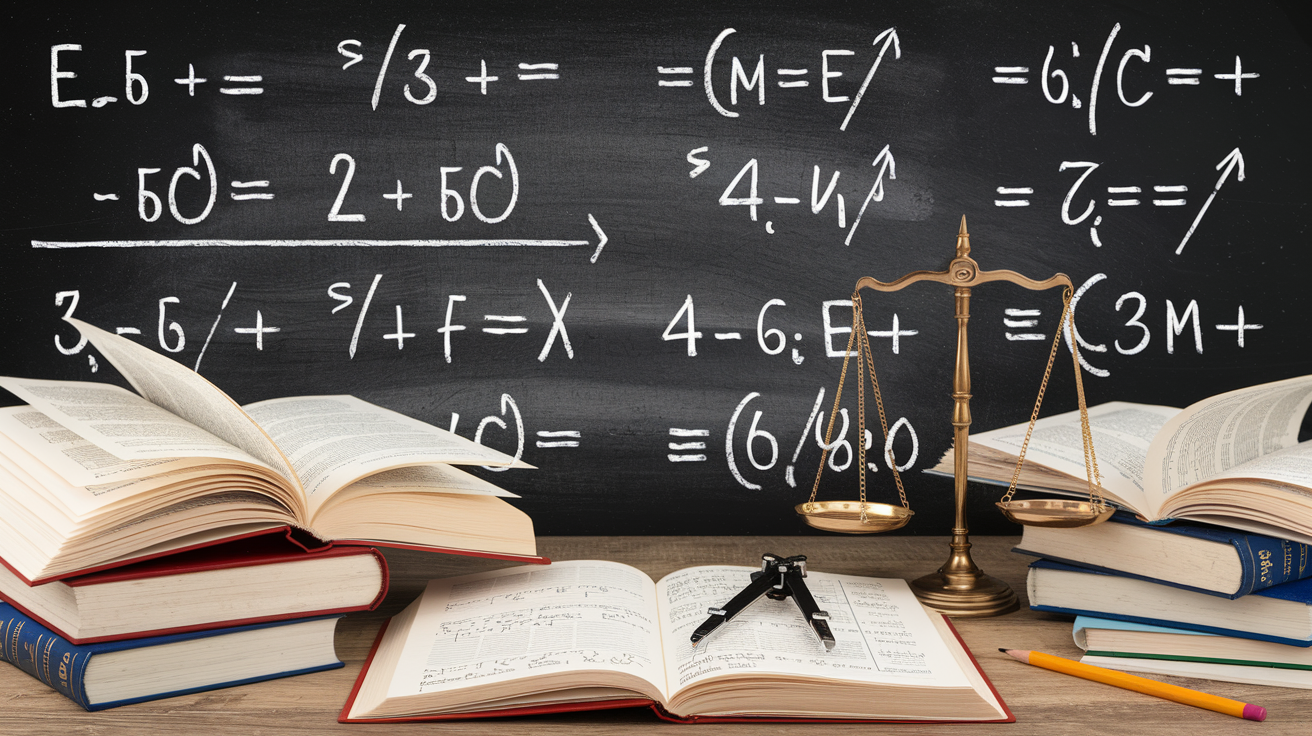
(iv) \( a=-1, d=\frac{1 }{ 2} \)
Answer
We have,1st term \( =-1 \) and \( d=\frac{1 }{ 2} \)
Hence,
\( \text {2nd term } \mathrm{a}_{2}=\mathrm{a}_{1}+\mathrm{d}\)
\(=-1+\frac{1 }{ 2}\)
\(=-\frac{1 }{ 2}\)
\(3\text {rd term } \mathrm{a}_{3}=\mathrm{a}_{1}+2 \mathrm{d}\)
\(=-1+2^{*} \frac{1 }{ 2}\)
\(=0\)
4th term \( \mathrm{a}_{4}=\mathrm{a}_{1}+3 \mathrm{d} \)
\(=-1+3^{*} \frac{1 }{ 2}\)
\(=\frac{1 }{ 2}\)
Therefore,
The four terms of A.P. are \( -1,-\frac{1 }{ 2},0,\frac{1 }{ 2} \)
(v) \( \mathrm{a}=-1.25, \mathrm{~d}=-0.25 \)
Answer
We have\( 1 \text {st term }=-1.25 \text { and } d=-0.25\)
\(2 \text {nd term } a_{2}=\mathrm{a}+\mathrm{d}\)
\(=-1.25-0.25\)
\(=-1.5\)
\(3 \text{rd term } a_{3}=\mathrm{a}+2 \mathrm{d}\)
\(=-1.25+2 \times(-0.25)\)
\(=-1.25-0.5\)
\(=-1.75\)
4th term \( \mathrm{a}_{4}=\mathrm{a}+3 \mathrm{d} \)
\(=-1.25+3 \times(-0.25)\)
\(=-2\)
Therefore, first four terms of the A.P. are: \( -1.25,-1.5,-1.75 \) and \(-2 \).
CBSE Class 10 Maths Chapter 5 Arithmetic Progressions Ex 5.1 || NCERT Solutions for Class 10 Maths Chapter 5: Arithmetic Progressions (English Medium)
Download the Math Ninja App Now3. For the following APs, write the first term and the common difference:
(i) \( 3,1,-1,-3, \ldots \)
Answer
Here, first term \( \mathrm{a}=3 \)Now,
The Common difference of the A.P. can be calculated as:
\(a_{4}-a_{3}\)
\(=-3-(-1)\)
\(=-3+1\)
\(=-2\)
\(a_{3}-a_{2}\)
\(=-1-1\)
\(=-2\)
\(a_{2}-a_{1}\)
\(=1-3\)
\(=-2\)
Now, here \( a_{k+1}-a_{k}=-2 \) for all values of \( k \)
Hence, first term \( =3 \) and common difference \( =-2 \)
(ii) \( -5,-1,3,7 \)
Answer
\(a_{4}-a_{3}\)\(=7-3\)
\(=4\)
\(a_{3}-a_{2}\)
\(=3-(-1)\)
\(=3+1\)
\(=4\)
\(a_{2}-a_{1}\)
\(=-1-(-5)\)
\(=-1+5\)
\(=4\)
Now, here, \( a_{k+1}-a_{k}=4 \) for all values of \( k \)
Therefore, first term \( =-5 \) and common difference \( =4 \)
(iii) \( \frac{1}{3}, \frac{5}{3}, \frac{9}{5}, \frac{13}{3}, \ldots \).
Answer
From the question,\(a_{4}-a_{3}\)
\(=\frac{13}{3}-\frac{9}{3}\)
\(=\frac{4}{3}\)
\(a_{3}-a_{2}\)
\(=\frac{9}{3}-\frac{5}{3}\)
\(=\frac{4}{3}\)
\(a_{2}-a_{1}\)
\( =\frac{4}{3} \)
Now, \( a_{k+1}-a_{k}=\frac{4}{3} \) for all values of \( k \)
Therefore,
First term \( =\frac{1 }{ 3 }\) and common difference \( =\frac{4 }{ 3} \)
CBSE Class 10 Maths Chapter 5 Arithmetic Progressions Ex 5.1 || NCERT Solutions for Class 10 Maths Chapter 5: Arithmetic Progressions (English Medium)
Download the Math Ninja App Now(iv) \( 0.6,1.7,2.8,3.9, \ldots \)
Answer
\(\mathrm{a}_{4}-\mathrm{a}_{3}\)\(=3.9-2.8\)
\(=1.1\)
\(\mathrm{a}_{3}-\mathrm{a}_{2}\)
\(=2.8-1.7\)
\(=1.1\)
\(\mathrm{a}_{2}-\mathrm{a}_{1}\)
\(=1.7-0.6\)
\(=1.1\)
Now, here, \( a_{k+1}-a_{k}=1.1 \) for all values of \( k \)
Therefore,
First term \( =0.6 \) and common difference \( =1.1 \)
4. Which of the following are APs? If they form an AP, find the common difference d and write three more terms.
(i) \( 2,4,8,16 \)
Answer
For a sequence to be an AP, the difference between two consecutive terms remains the same, that is called the common difference of APif \( a_{k+1}-a_{k} \) is same for different values of \( k \) then the series is an AP.
We have, \( a_{1}=2, a_{2}=4, a_{3}=8 \) and \( a_{4}=16 \)
\(a_{4}-a_{3}=16-8=8\)
\(a_{3}-a_{2}=8-4=4\)
\(a_{2}-a_{1}=4-2=2\)
Here, \( a_{k+1}-a_{k} \) is not same for all values of \( k \).
Hence, the given series is not an AP.
CBSE Class 10 Maths Chapter 5 Arithmetic Progressions Ex 5.1 || NCERT Solutions for Class 10 Maths Chapter 5: Arithmetic Progressions (English Medium)
Download the Math Ninja App Now
(ii) \( 2, \frac{5}{2}, 3, \frac{7}{2} \)
Answer
For a sequence to be an AP, the difference between two consecutive terms remains the same, that is called the common difference of APAs per the question:
\(\mathrm{a}_{1}=2\)
\(\mathrm{a}_{2}=\frac{5 }{ 2}\)
\(\mathrm{a}_{3}=3\)
And
\(a_{4}=\frac{7}{2}\)
\(a_{4}-a_{3}=\frac{7}{2}-3=\frac{1 }{ 2}\)
\(a_{3}-a_{2}=3-\frac{5}{2}=\frac{1 }{ 2}\)
\(a_{2}-a_{1}=\frac{5}{2}-2=\frac{1 }{ 2}\)
Now, we can observe that \( a_{k+1}-a_{k} \) is same for all values of \( k \).
Hence, it is an AP.
And, the common difference \( =\frac{1 }{ 2} \)
Next three terms of this series are:
\(a_{5}=a+4 d\)
\(=2+4^{*} \frac{1 }{ 2}\)
\(=4\)
\(a_{6}=a+5 d\)
\(=2+5^{*} \frac{1 }{ 2}\)
\(=\frac{9}{2}\)
\(a_{7}=\mathrm{a}+6 d\)
\(=2+6^{*} \frac{1 }{ 2}\)
\(=5\)
Hence,
The next three terms of the AP are: \( 4,\frac{9 }{ 2} \) and \(5\)
(iii) \( -1.2,-3.2,=5.2,-78.2, \ldots \)
Answer
For a sequence to be an AP, the difference between two consecutive terms remains the same, that is called the common difference of AP\( \mathrm{a}_{4}-\mathrm{a}_{3}=-7.2+5.2=-2\)
\(\mathrm{a}_{3}-\mathrm{a}_{2}=-5.2+3.2=-2\)
\(\mathrm{a}_{2}-\mathrm{a}_{1}=-3.2+1.2=-2\)
In this, \( a_{k+1}-a_{k} \) is same for all values of \( k \).
Hence, the given series is an AP.
Common difference \( =-2 \)
Next three terms of the series are:
\(\mathrm{a}_{5}=\mathrm{a}+4 \mathrm{d}\)
\(=-1.2+4 \times(-2)\)
\(=-1.2-8\)
\(=-9.2\)
\(a_{6}=a+5 d\)
\(=-1.2+5 \times(-2)\)
\(=-1.2-10\)
\(=-11.2\)
\(a_{7}=a+6 d\)
\(=-1.2+6 \times(-2)\)
\(=-1.2-12\)
\(=-13.2\)
Next three terms of AP are: \( -9.2,-11.2 \) and \(-13.2\)
CBSE Class 10 Maths Chapter 5 Arithmetic Progressions Ex 5.1 || NCERT Solutions for Class 10 Maths Chapter 5: Arithmetic Progressions (English Medium)
Download the Math Ninja App Now(iv) \( -10,-6,-2,2, \ldots \)
Answer
For a sequence to be an AP, the difference between two consecutive terms remains the same, that is called the common difference of AP\( a_{4}-a_{3}=2+2=4 \)
\(a_{3}-a_{2}=-2+6=4\)
\(a_{2}-a_{1}=-6+10=4\)
Here, \( a_{k+1}-a_{k} \) is same for all values of \( k \)
Hence, the given series is an AP.
Common difference \( =4 \)
Next three terms of the AP are:
\( \mathrm{a}_{5}=\mathrm{a}+4 \mathrm{d}\)
\(=-10+4 \times 4\)
\(=-10+16=6\)
\(a_{6}=a+5 d\)
\(=-10+5 \times 4\)
\(=-10+20=10\)
\(a_{7}=a+6 d\)
\(=-10+6 \times 4\)
\(=-10+24=14\)
Next three terms of AP are: 6,10 and 14.
(v) \( 3,3+\sqrt{2}, 3+2 \sqrt{2}, 3+3 \sqrt{2} \)
Answer
For a sequence to be an AP, the difference between two consecutive terms remains the same, that is called the common difference of AP\( \mathrm{a}_{4}-\mathrm{a}_{3}=3+3 \sqrt{ 2} -3-2 \sqrt{ 2} =\sqrt{ 2 } \) \(a_{3}-a_{2}=3+2 \sqrt{2 } -3-\sqrt{ 2} =\sqrt{2 } \)
\(a_{2}-a_{1}=3+\sqrt{ 2 }-3=\sqrt{2 } \)
Here, \( a_{k+1}-a_{k} \) is same for all values of \( k \)
Hence, the given series is an AP.
Common difference \( =\sqrt{ 2} \)
Next three terms of the AP are
\(a_{6}=a+5 d=3+5 \sqrt{ 2 }\)
\(a_{7}=a+6 d=3+6 \sqrt{ 2} \)
Next three terms of AP are: \( 3+4 \sqrt{2 } ,3+5 \sqrt{2 } \) and \( 3+6 \sqrt{2 } \)
(vi) \( 0.2,0.22,0.222,0.2222, \ldots \)
Answer
For a sequence to be an AP, the difference between two consecutive terms remains the same, that is called the common difference of AP\(a_{4}-a_{3}=0.2222-0.222=0.0002\)
\(a_{3}-a_{2}=0.222-0.22=0.002\)
\(a_{2}-a_{1}=0.22-0.2=0.02\)
Here, \( a_{k+1}-a_{k} \) is not same for all values of \( k \)
Hence, the given series is not an AP.
(vii) \( 0,-4,-8,-12, ...\)
Answer
For a sequence to be an AP, the difference between two consecutive terms remains the same, that is called the common difference of APHere; \( a_{4}-a_{3}=-12+8=-4 \)
\( a_{3}-a_{2}=-8+4=-4 \)
\( a_{2}-a_{1}=-4-0=-4 \)
Since \( a_{k+1}-a_{k} \) is same for all values of \( k \).
Hence, this is an AP.
The next three terms can be calculated as follows:
\( a_{5}=a+4 d=0+4(-4)=-16 \)
\( a_{6}=a+5 d=0+5(-4)=-20 \)
\( a_{7}=a+6 d=0+6(-4)=-24 \)
Thus, next three terms are; \( -16,-20 \) and \(-24\)
(viii) \( -\frac{1}{2},-\frac{1}{2},-\frac{1}{2},-\frac{1}{2}, \ldots \)
Answer
For a sequence to be an AP, the difference between two consecutive terms remains the same, that is called the common difference of APHere, it is clear that \( d=0 \)
Since \( a_{k+1}-a_{k} \) is same for all values of \( k \).
Hence, it is an AP.
The next three terms will be same, i.e. \( -\frac{1 }{ 2} \)
(ix) \( 1,3,9,27 \)
Answer
For a sequence to be an AP, the difference between two consecutive terms remains the same, that is called the common difference of AP\( \mathrm{a}_{4}-\mathrm{a}_{3}=27-9=18 \)
\( a_{3}-a_{2}=9-3=6 \)
\( \mathrm{a}_{2}-\mathrm{a}_{1}=3-1=2 \)
Since \( a_{k+1}-a_{k} \) is not same for all values of \( k \).
Hence, it is not an AP.
CBSE Class 10 Maths Chapter 5 Arithmetic Progressions Ex 5.1 || NCERT Solutions for Class 10 Maths Chapter 5: Arithmetic Progressions (English Medium)
Download the Math Ninja App Now(x) \(a, 2a, 3a, 4 a, \ldots \)
Answer
For a sequence to be an AP, the difference between two consecutive terms remains the same, that is called the common difference of AP\( a_{4}-a_{3}=4 a-3 a=a \)
\( \mathrm{a}_{3}-\mathrm{a}_{2}=3 \mathrm{a}-2 \mathrm{a}=\mathrm{a} \)
\( \mathrm{a}_{2}-\mathrm{a}_{1}=2 \mathrm{a}-\mathrm{a}=\mathrm{a} \)
Since \( a_{k+1}-a_{k} \) is same for all values of \( k \).
Hence, it is an AP.
Next three terms are:
\( a_{5}=a+4 d=a+4 a=5 a \)
\(a_{6}=a+5 d=a+5 a=6 a\)
\(a_{7}=a+6 d=a+6 a=7 a\)
Next three terms are; 5a, 6a and 7a.
(xi) \( a, a^{2}, a^{3}, a^{4}, \ldots \)
Answer
For a sequence to be an AP, the difference between two consecutive terms remains the same, that is called the common difference of APHere, the exponent is increasing in each subsequent term.
\(a_{4}=a^{4}, a_{3}=a^{3}, a_{2}=a^{2}, a_{1}=a\)
\(a_{4}-a_{3}=a^{4}-a^{3}\)
\(a_{3}-a_{2}=a^{3}-a^{2}\)
since, the difference is not same,
Since \( a_{k+1}-a_{k} \) is not same for all values of \( k \).
Hence, it is not an AP
(xii) \( \sqrt{2}, \sqrt{8}, \sqrt{18}, \sqrt{32}... \)
Answer
For a sequence to be an AP, the difference between two consecutive terms remains the same, that is called the common difference of APDifferent terms of this AP can also be written as follows: \(\sqrt{2}, 2 \sqrt{ 2} ,3 \sqrt{2 } ,4 \sqrt{2}, \ldots \ldots \ldots\)
\(a_{4}-a_{3}=4 \sqrt{ 2} -3 \sqrt{2}=\sqrt{2}\)
\(a_{3}-a_{2}=3 \sqrt{ 2} -2 \sqrt{2 } =\sqrt{2}\)
\(a_{2}-a_{1}=2 \sqrt{2 } -\sqrt{ 2} =\sqrt{2 } \)
Since \( a k+1-a k \) is same for all values of \( k \).
Hence, it is an AP.
Next three terms can be calculated as follows:
\(a_{5}=a+4 d=\sqrt{2 } +4 \sqrt{ 2} =5 \sqrt{2 } \)
\(a_{6}=a+5 d=\sqrt{2 } +5 \sqrt{2 } =6 \sqrt{ 2} \)
\(a_{7}=a+6 d=\sqrt{2 } +6 \sqrt{2 } =7 \sqrt{2 } \)
Next three terms are; \( 5 \sqrt{2 } ,6 \sqrt{2 } \) and \( 7 \sqrt{2 } \)
(xiii) \( \sqrt{3}, \sqrt{6}, \sqrt{9}, \sqrt{12} \ldots \)
Answer
For a sequence to be an AP, the difference between two consecutive terms remains the same, that is called the common difference of AP\( a_{4}-a_{3}=\sqrt{12 } -\sqrt{ 9} =2 \sqrt{3 } -3\)
\((\sqrt{ 12} =\sqrt{ 2} \times 2 \times 3=2 \sqrt{ 3} )\)
\(a_{3}-a_{2}=\sqrt{9 } -\sqrt{ 6} =3-\sqrt{6 } \)
\(a_{2}-a_{1}=\sqrt{6 } -\sqrt{ 3 }\)
Since \( a_{k+1}-a_{k} \) is not same for all values of \( k \).
Hence, it is not an AP
(xiv) \( 1^{2}, 3^{2}, 5^{2}, 7^{2} \ldots \)
Answer
For a sequence to be an AP, the difference between two consecutive terms remains the same, that is called the common difference of APThe given terms can be written as follows:
\( 1,9,25,49, \ldots \)
Here, \( a_{4}-a_{3}=49-25=24 \)
\( \mathrm{a}_{3}-\mathrm{a}_{2}=25-9=16 \)
\( \mathrm{a}_{2}-\mathrm{a}_{1}=9-1=8 \)
Since \( a_{k+1}-a_{k} \) is not same for all values of \( k \).
Hence, it is not an AP.
(xv) \( 1^{2}, 5^{2}, 7^{2}, 73 \)
Answer
For a sequence to be an AP, the difference between two consecutive terms remains the same, that is called the common difference of AP\( 1^{2}, 5^{2}, 7^{2}, 73 \ldots \).
\( a=1 d=5^{2}-1=25-1=24 \)
\( \mathrm{d}=7^{2}-5^{2}=49-25=24 \)
\( \mathrm{d}=74-49=24 \) As, common difference is same. The sequence is in A.P.

